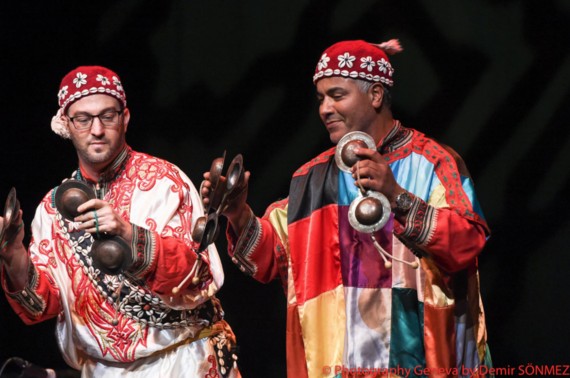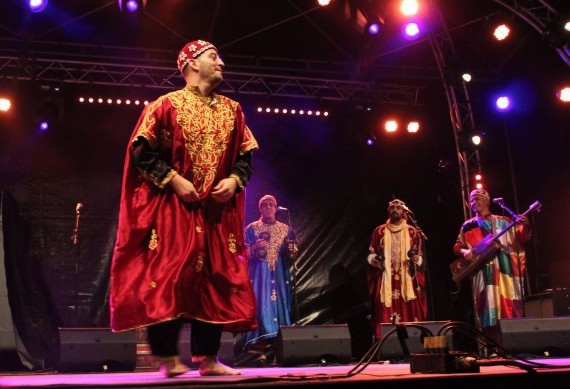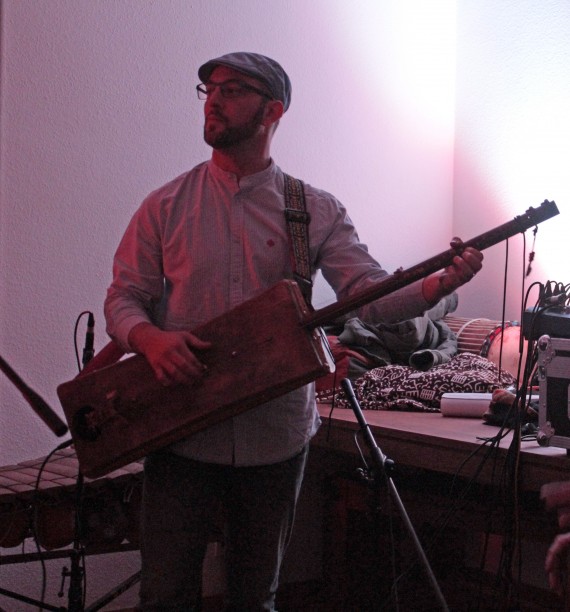adem
d'ethnomusicologie
Introducton to Gnawa music
Khalil Bensid
Africa | Instruments & repertories

Gnawa Music
Gnawa music originated in the Maghreb from the cultural practices that Black African slaves brought with them. It is called Gnawa in Morocco, Diwan in Algeria, and Stambali in Tunisia and Libya.
The Gnawa fraternity is the result of exchange and amalgamation between West and North Africa. The music and rituals of the Gnawas are thought to have their roots in Sahelian practices that were adapted by the descendents of Sub-Saharan Muslims in the Maghreb.
The possession ritual, in which African and Arab-Berber influences fuse, serves to drive out the evil that man suffers from and to restore balance to one’s interior universe. This is achieved through music, songs, invocations and the dance of possession.
Gnawa musicians have long been marginalised, but are now internationally recognised and participate in numerous musical fusion projects.
Class
With teaching adapted to all levels, the classes include a brief presentation of the Gnawa rhythms, and will be followed by an introduction to the guembri and karkabous. The aim is to achieve a degree of rhythmic autonomy on the instruments.
Goals
Introduction to basic rhythms of the main instruments
Identification and progressive control of the interplay between the guembri and the karakbous
Discovery of the energy and spirit of the Gnawas through the pleasure of playing rhythms
Bio
Born in 1980, Khalil is a Gnawa musician based in Geneva and a member of the group Jil Gnawa. Having travelled for his whole childhood, he was formed by the mix of cultures he came into contact with (Maghreb, Sub-Saharan, Indian, North American and European).
He discovered the guembri (the Gnawa bass) and Gnawa music in 2005, then met the Maalem (Gnawa master), Mohamed Khabba. He settled in Geneva and has dedicated himself ever since to this art (percussion, song, dance and guembri).
PLACE:
ADEM MARAICHERS
44, rue des Maraîchers - 1205 Geneva
TIMETABLE:
Monday 19h-21h
FEES:
Group lesson (from 3 students) : 25 frs / hour Individual lesson :40 frs / hour
CONTACT:
T : 078 911 72 94
Email : jilgnawa@gmail.com



Discover other classes
Danses traditionnelles du Mozambique
Carlos Machava
Come explore the traditional dances of Mozambique, a country with a rich culture of dance. In Mozambican dance, the rhythm comes first, and the movement of the body is then expressed. The dance is dynamic, rhythmic and joyful.
Argentine tango and folk music
Possibility of lessons by video conference, individual or group lessons. Infos : pedroratto@hotmail.com
Pedro Ratto
Differents courses with the aim to learn on guitar tango and the different rhythms of Argentine music.